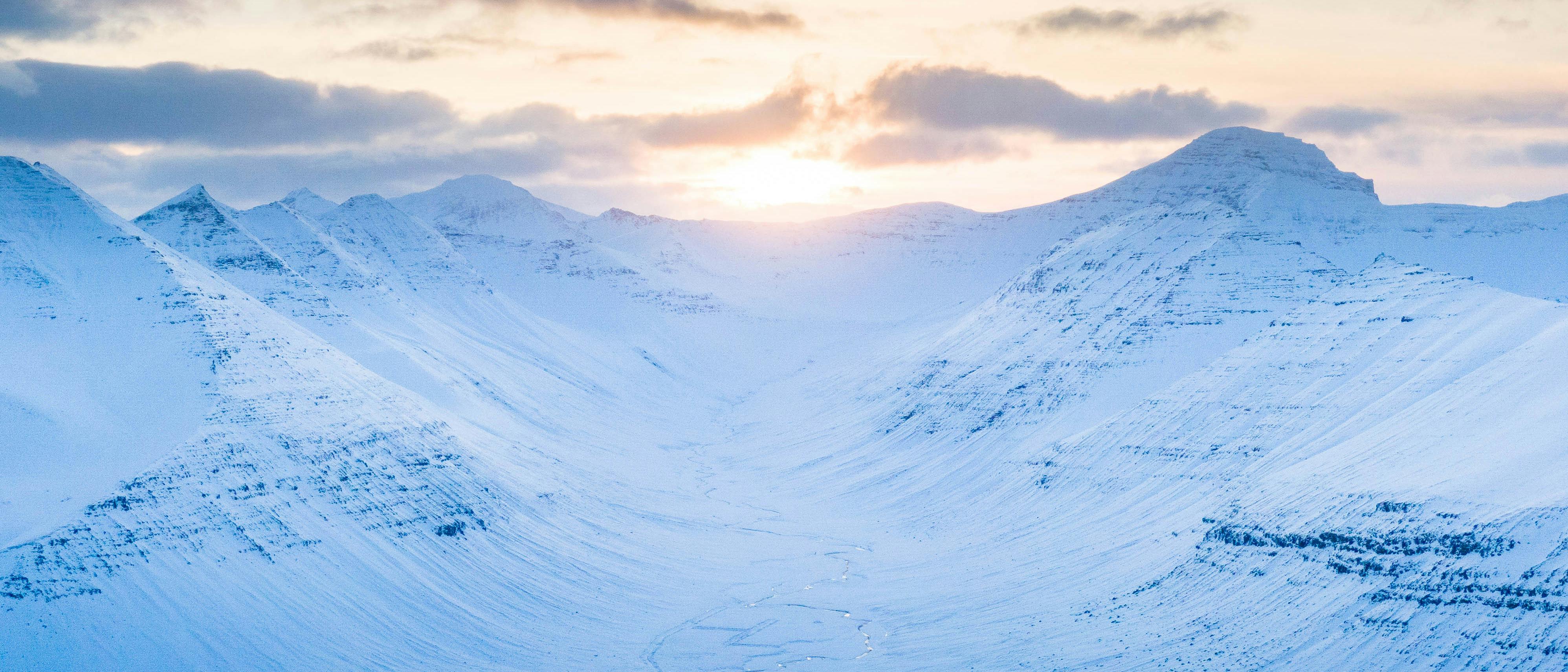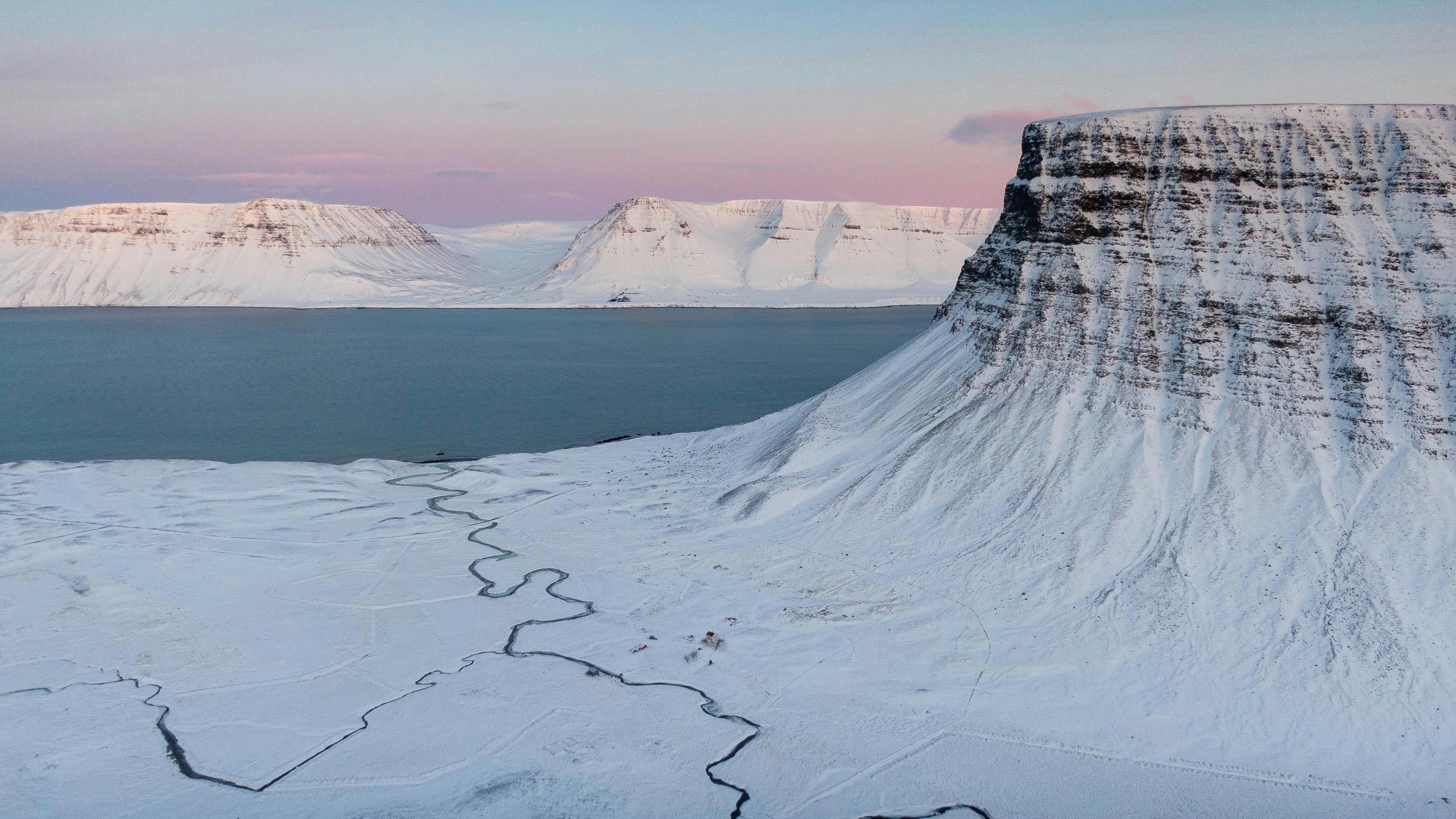
Seeking shelter in the valley of Keldudalur
Keldudalur 65.9°N
Even though he no longer lives there, every September Valdimar brings his horses to Keldudalur to graze.




December in Dýrafjörður. The evening light casts a purple haze over the valley of Keldudalur. Horses graze freely in the fields, gathering up the last of the grasses before the weather starts to turn. In the distance, the glow of the firelight shines through a farmhouse – the only sign of human presence in sight.
The house, built in 1936, is the property of Valdimar Elíasson. Born in 1962, he spent the first five years of his life amongst the mountains around the house. Now, the valley is deserted, but near the turn of the 20th century, there were around one hundred adults registered on the census. Valdimar’s family was the last to leave; they, like many other residents, relocated to other nearby villages.

The valley is sheltered from bad weather. No matter where the wind comes from, the horses always find shelter.

Even though he no longer lives there, every September Valdimar brings his horses to Keldudalur to graze. The Icelandic horse, the only breed of horse on the island, is a beloved creature.
Though small and sometimes confused with ponies, they are hardy animals who have adapted to the Icelandic climate over the centuries since the Norse brought them over. Amongst equestrians, Icelandic horses are celebrated for their unique gaits.

Valdimar mostly uses the horses for recreation, but the Dýrafjörður fjord is not a common place to rear horses, the mountain passes and the weather are not always ideal. The valley in Keldudalur, however, provides shelter for the creatures.
“The valley is very good in bad weather, shelter can be found everywhere, no matter which direction. It’s good for the horses to be free for a bit every year” says Valdimar.


Now, in December, it’s time for the horses’ annual pilgrimage back to the stables in Þingeyri. “They are generally very willing to go back home,” says Valdimar.
“When they’re on the road they usually don’t stop until they reach the stables.” The horses walk confidently, their coats – chestnut, pinto, black and bay – contrast the shock of white along the mountainside. As they pull close to the stables, they break into a trot, their manes flowing beside them.

The journey, around the mountain and along the fjord, would not be possible before the road was built there in 1951. Valdimar reckons that lack of good transportation was a major cause for many to leave the valley over the last one hundred years, “If there had been a better road to the valley, I can imagine there would still be people living here,” he remarked.
Before the road existed, the people in Keldudalur had two options for getting supplies: boat or foot. “Back then, it didn't put people off much, because it was so common in those days,” he said, “People were taught where to go. Either the beach or up the mountain. Care had to be taken to ensure that there was no risk of avalanches or such. The shore is exposed to tides. On high tide we’d have to gain elevation and scramble past the cliffs. If tide was low, we could walk the rocky shore.” But, he continued, “There was no rush to the store at that time.”


Valdimar was one of those who left as well - lived in Reykjavik for a bit and spent a number of years out at sea as a captain on fishing trawlers - but he always returned to the fjord where he was born.
Dýrafjörður has everything he needs. “I feel good here. Have always felt good here,” he says. “Good community, nature is amazing. The connection to nature; freedom. Short distances to everything you need to live happy. Close to the mountain, short way down to the beach, time is short between winter, summer, spring and autumn. I feel like everything is here that I choose.”

That freedom, that connection to nature, is also a part of the experience with the horses. “Man connects with the animals differently. In the stable it is as if everything oppressive is taken from one's shoulders, it cannot enter. The horses take over.”
For Valdimar, a ride on the back of these cherished animals is all he needs. “It empties a person's head and recharges with new energy. This is how you feel when you ride a horse.”



